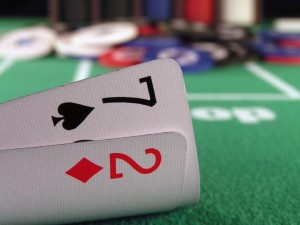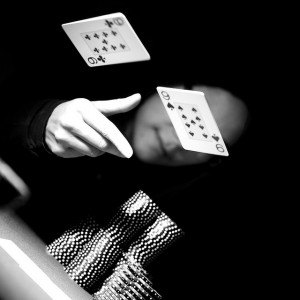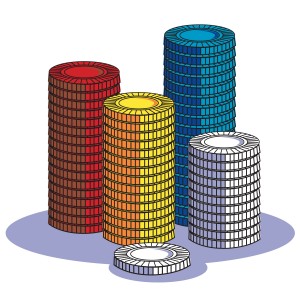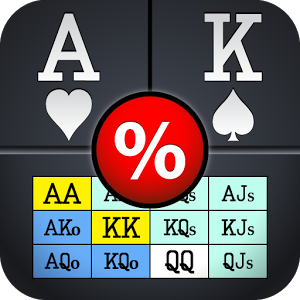Now, onto some thoughts about the best ways to profit from these subpar players. What are the best ways to accomplish this? The answer can vary based on the stakes and the type of poor player you’re up against. In this article, I am going to provide more of an insight to how I try and handle things at the higher stakes.
I’m going to separate the advice into three types of fish: the overaggressive, the limper, and the predicatable. Each type creates a different situation, and the competent player must recognize this and play each opponent appropriately in order to make the most out of his opportunities.
— The overaggressive fish. This is the type of maniac who loves to sit down, start raising immediately (especially preflop), and create some general havoc for the entire table. He can often be tricky and he’s usually very tough to put on any kind of hand. I have noticed that some people like to keep their distance from this person….sit as far away as possible and react to what he does. However, I have found that the best way to handle this type at the higher stakes is to sit down at the seat to his immediate left. Why? This allows you the option to put pressure against the maniac (and EXTREME pressure on the rest of the table) by re-raising him pre-flop at every opportunity. This strategy is NOT for the faint of heart, and it does not work very well at lower limit tables if the people will happily limp in for two or three bets anyway. But if you can succeed in eliminating the field this way, you will often find yourself with the best hand AND position on the maniac (heads up) going into the flop….putting you at a distinct advantage. It’s difficult to pinpoint how far I will lower the quality of my starting hands with which to make this play; I have been known to re-raise with something like K9 if the maniac is extremely wild and I know that there’s a good chance that those mediocre cards will be a monster compared to his holding. Another benefit of three-betting him often is that you will really annoy the rest of the table (and they’ll likely start to press their luck to compensate.) Sometimes the whole table will then go on tilt, and you can reap the rewards if you continue to play such a controlled-aggressive strategy.
— The limper fish. Here is a player who will hold on to his hand for dear life; you’d have a tough time getting him to fold without prying his cards away with a crowbar. He’s usually involved in the action and he slowly gives away his chips until he finally hits his three-outer and scoops a decent pot against a newly-enraged opponent. This kind of player will practically force you to play better cards because you’re more likely to have to win a showdown against him. If he is sitting behind you, you’ll have to think twice before trying to raise pre-flop with a hand like 99 because you know that he is likely to call two bets anyway with his K8s (thus leading to you being out of position with your 99 and against maybe three opponents…not a good situation at all!) Since a limper will often create a domino-limping effect around the table, I prefer to toss most marginal hands (such as KJ in bad position) and focus on either big cards or drawing hands. When you’re in a hand with the limper, it’s also vital to avoid slow-playing as much (why take the chance of not being paid off by inferior draws or shots in the dark at catching one overcard, especially when the limper might not be sharp enough to figure out that you might be slowplaying anyway?)
— The predictable fish. Pre-flop, he ALWAYS raises with QQ, calls with 66 or A-10, and folds rags (regardless of his position or what the table conditions are like.) He stays in when he flops a draw and folds when the flop misses him. He slowplays sets but raises top pair on the flop. He calls the turn with second pair and raises on the river if his hand improves. Sensing a trend here? 🙂 While this type of fish will not fill your pockets as quickly as the first two types, you can still grind away against him without incurring a lot of risk. When he raises, you can fold your second pair on the turn or your 77 preflop. You can also try fancier bluffs against him, because he will quickly fold a questionable hand if you show aggression at the right time. Personally, I prefer the first two types of fish more because it takes awhile to know that you should give someone the “predictable” label (the other two types are much easier to spot.)
I’ll wrap up this two-part discussion of finding/gutting the poker fish with the following thought: while it’s extremely important to sit with the right players, please don’t be a “Wonger.” Those of you who are serious blackjack students might be familiar with this term. A Wonger is a blackjack player who watches the game for a long time until the count is extremely positive. Then, he sits down to get in as many hands as he can in the positive deck before leaving immediately afterward (the term comes from author Stanford Wong, who became well-known for doing this years ago.) I find the practice disrespectful to the regular players (who have been betting their money during both the positive and negative counts.) There are a couple of players at Pokerstars (friends, actually) who do the exact same thing at 30-60 and 100-200….they only show up when a game is ridiculously good, and then they are gone very quickly. While some consider this quite shrewd, I’ve always felt that it is a slap in the face to the regulars who play in both great AND good games. Not to mention the fact that a Wonger will not make that much money overall (even though a skilled one will have a very high win rate….what good does that do you if you’ve only played a handful of hours?)
Until next month everyone……find weak opponents, play them the right way, and win without Wonging too much!
All the best,
John
Submit your review | |










